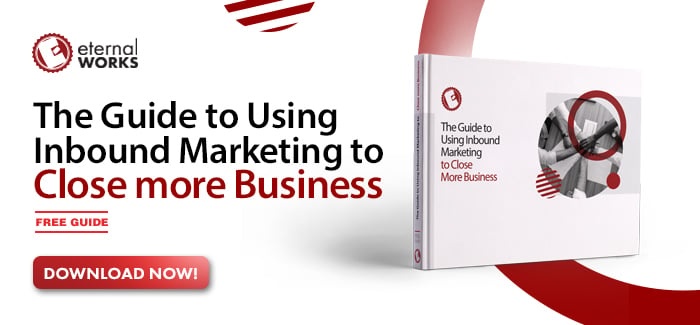We all know the word "selling" has taken on a negative connotation in recent years. It's become synonymous with high-pressure tactics and unethical business practices, which is also known as outbound selling!
As a result, many companies have shifted their focus to inbound selling, a softer, more customer-centric approach that puts the customer's needs first. This blog post will look at what inbound selling is, why it is important, the six principles of inbound selling, and how you can use inbound selling to gain an advantage over the competition.
What is Inbound Selling?
In inbound selling, the focal point is on the customer and their specific needs. This type of selling involves developing relationships with potential customers and earning their trust, ultimately positioning your company ahead of the competition.
Inbound sales representatives work to understand a customer's problems and then offer a solution that meets the customer's needs, rather than simply trying to sell them a product or service. Inbound selling is a more consultative approach that can result in long-term relationships and repeat business.
Why is Inbound Selling Important?
Inbound selling is essential because it helps you connect with customers and prospects, learn about their needs and pain points, and offer them solutions. Let's explore why this is so important.
It Educates Buyers
Inbound selling is important because it educates potential buyers on your product or service. It allows you to build trust and credibility with them by providing information they can use to make an informed decision.
It Creates Lasting Relationships with Customers
Inbound sales is essential because it helps you create lasting customer relationships. You can build trust and loyalty by providing them with valuable information and offering solutions to their problems. These relationships can last a lifetime, which benefits you and your customer.
It Builds Trust with Your Customer Base
Inbound selling helps you build trust with your customer base. You can establish yourself as an expert in your field by providing them with valuable information and offering solutions to their problems. This trust can lead to repeat business and referrals, which is essential for any business.
The Six Principles of Inbound Selling
As you implement inbound selling to grow your business, you will want to follow the six principles of inbound selling.
1. Learn More About Your Prospects.
To learn more about your prospects, you'll want to consider their buyer's journey and what questions they may have at each stage. You can also use tools like Google Analytics and social media listening to gain insights into your target audience.
2. Discover Why They Might Buy From You Before You Even Reach Out.
You must first understand why your prospect would buy from you to sell effectively. This means doing your research and understanding their specific needs and pain points. Only then can you begin to craft a solution that meets their needs.
3. Choose The Right Time and Place For Your Attempts.
The timing and frequency of your attempts to reach a prospect are crucial. You don't want to be too pushy, but you also don't want to miss the opportunity to make a sale. Consider using tools like lead scoring to help you determine when a prospect is ready to buy.
4. Be Interested, Not Just Interesting.
Your prospects are more likely to engage with you if they feel you're genuinely interested in them and their needs. So ask questions, listen to their answers, and tailor your pitch accordingly.
5. Build Up Your Thought Leadership and Following.
As a part of your inbound selling strategy, you'll want to focus on building your thought leadership and following. This can be done through creating helpful content, participating in online conversations, and networking with influencers in your industry.
6. Be a "SMAhT" SalesPerson.
Sharp
Mental sharpness is key in inbound sales. You need to be able to think on your feet, adapt to changes quickly, and always be one step ahead of the competition. This means staying up to date on industry trends, being prepared for objections, and constantly refining your sales process.
Motivated
The best inbound sellers are highly motivated. They're driven to succeed and always looking for ways to improve their performance. If you want to be successful with inbound selling, you need to have a strong desire to win and the willingness to put in the hard work required.
Ambiverted
Most successful inbound sellers are ambiverted, which means they can adapt their communication style to fit the situation. This means being able to switch between extroverted and introverted behaviors as needed. Being ambiverted gives you the flexibility to build relationships and close deals.
Helpful
Helping others is a key component of inbound selling. By offering your help and expertise, you can build trust and credibility with your prospects. This will make them more likely to do business with you.
Transparent
To be successful with inbound selling, you must be transparent. This means being honest about your intentions, product, and prices. Prospects appreciate honesty and will be more likely to do business with you if they feel they can trust you.
Gaining an Advantage with Inbound Selling Techniques
Sales teams that use inbound selling techniques can gain a significant advantage over their competitors. By aligning their sales strategies with how their customers make purchasing decisions, they can increase close rates and shorten sales cycles.
Define Your Buyer's Journey
The first step to successful inbound selling is understanding your buyer's journey. This means mapping out the steps your buyers take to make a purchase. Understanding the buyer's journey can align your sales efforts with their decision-making process, resulting in more closed deals and shorter sales cycles.
Develop a Sales Process that Supports the Buyer's Journey
Once you've defined the buyer's journey, you'll need to develop a sales process that supports it. This means creating a system for your sales team that takes your buyers through each journey stage. Doing this ensures your sales team always provides the correct information at the right time.
Identify Your Ideal Buyer Persona
Creating a buyer persona is essential for inbound selling success; your sales efforts will be much more effective if you're targeting the right type of buyer. When creating your buyer persona, consider their needs, pain points, and goals. By doing this, you can ensure your sales team is always providing the correct information to potential customers.
Lead With a Helpful, Customized Prospecting Message
Your prospecting message is the first step in getting your foot in the door with a potential buyer. Therefore, ensuring your message is helpful and customized to their needs is essential. Doing this can increase the likelihood of getting your foot in the door and beginning a relationship with the buyer.
Craft Customized Questions to Uncover the Prospect's Pain
Asking the right questions is essential for discovering a prospect's pain points. By crafting personalized questions, you can ensure you're always getting the information you need. Additionally, this will help you build a relationship with the prospect and better understand their needs.
Give a Tailored Presentation
Giving a tailored presentation is essential for closing the deal. By customizing your presentation to the buyer's needs, you can increase your chances of success. Additionally, this will show the buyer that you understand their needs and have a solution to their problems.
Key Takeaways
Inbound selling is all about putting the customer first. Rather than bombarding potential customers with sales pitches, inbound selling involves developing relationships and earning trust. This approach is more effective in the long run and can result in more closed business and happier customers.
Download our free comprehensive guide today to learn how to use inbound marketing to close more business.


